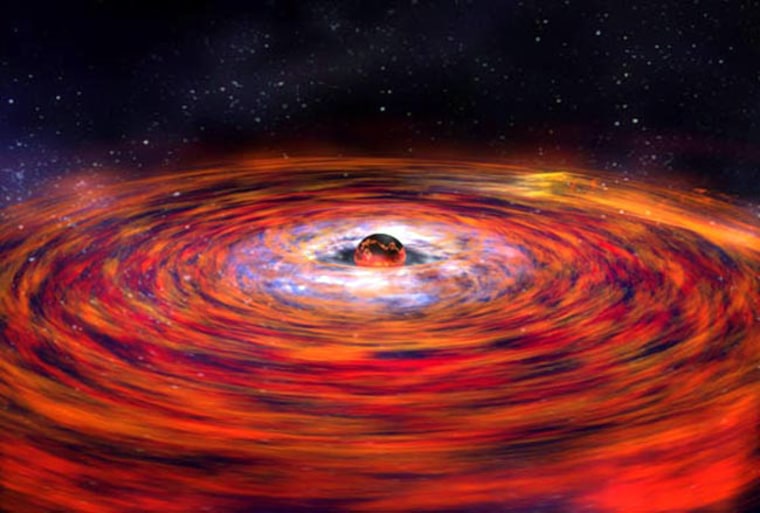Einstein's predicted warping of space-time has been discovered around neutron stars, the most dense observable matter in the universe.
The warping shows up as smeared lines of iron gas whipping around the stars, University of Michigan and NASA astronomers say. The finding also indicates a size limit for the celestial objects.
The same distortions have been spotted around black holes and even around Earth, so while the finding may not be a surprise, it is significant for answering basic questions of physics, said study team member Sudip Bhattacharyya of NASA's Goddard Space Flight Center in Greenbelt, Md. and the University of Maryland, College Park.
"This is fundamental physics," Bhattacharyya said. "There could be exotic kinds of particles or states of matter, such as quark matter, in the centers of neutron stars, but it's impossible to create them in the lab. The only way to find out is to understand neutron stars."
Neutron stars can pack more than a sun's worth of material into a city-sized sphere. A few cups of neutron-star stuff would outweigh Mount Everest. Astronomers use these collapsed stars as natural laboratories to study how tightly matter can be crammed under the most extreme pressures nature can offer.
To even begin to address the mystery of what lies within these dying stars, scientists must accurately and precisely measure their diameters and masses.
In two concurrent studies, astronomers used the European Space Agency's XMM-Newton X-ray Observatory and the Japanese/NASA Suzaku X-ray to survey three neutron-star binaries: Serpens X-1, GX 349+2 and 4U 1820-30. They also studied the spectral lines from hot iron atoms that whirl around in a disk just beyond the neutron stars' surfaces at speeds reaching 40 percent light speed.
Normally, the measured spectral line for the superheated iron atoms would show up as a symmetrical peak. However, their results showed a skewed peak that was indicative of distortion due to relativistic effects. The extremely fast motion of the gas (and the related powerful gravity), they say, causes the line to smear, shifting it to longer wavelengths.
The measurements allowed them to determine maximum star size. "We're seeing the gas whipping around just outside the neutron star's surface," said XMM-Newton team member Edward Cackett of the University of Michigan. "And since the inner part of the disk obviously can't orbit any closer than the neutron star's surface, these measurements give us a maximum size of the neutron star's diameter."
He said the neutron stars can be no larger than about 20.5 miles (33 kilometers) across.
The XMM-Newton paper was published in the Aug. 1 issue of Astrophysical Journal Letters. The other paper has been submitted for publication in the same journal.
